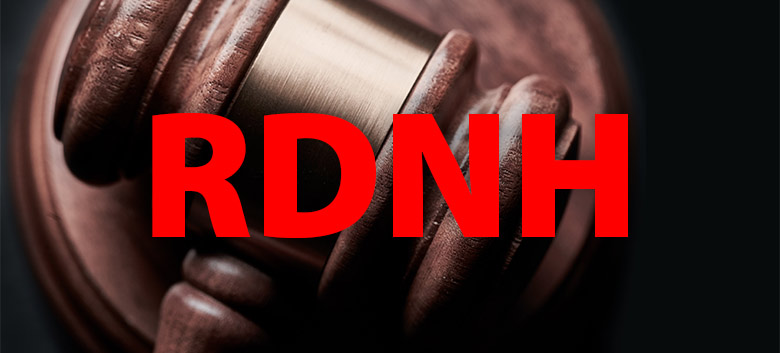Top Systems Brasil Software Financeiro Ltda. went after the premium domain Topaz.com, claiming trademark rights dating to 2021. But the domain had been registered by Reflex Publishing way back in 1998, a full 23 years before the Complainant even filed for its first trademark!
The Brazilian fintech firm, part of the Stefanini Group, argued that Reflex had no legitimate interest and was using the domain in bad faith by parking it with ads related to topaz gemstones. Represented by IP attorney John Berryhill, Reflex Publishing countered that “topaz” is a dictionary word, used generically in PPC ads for jewelry and gems, with no targeting of the Complainant or its business.
The panel agreed, noting Reflex had registered the domain long before the Complainant’s trademark existed, and was using it in line with its dictionary meaning. In fact, the panel found the complaint so lacking that it called out the Complainant for ignoring established UDRP precedent as part of a misguided attempt to manufacture bad faith.
Final decision: Deny the transfer of the domain Topaz.com to the Complainant, finding them guilty of Reverse Domain Name Hijacking. On a fun note, the decision arrived all while John Berryhill was participating in the Pan-Mass cycling Challenge!

Copyright © 2025 DomainGang.com · All Rights Reserved.ARBITRATION AND MEDIATION CENTER – ADMINISTRATIVE PANEL DECISION
Top Systems Brasil Software Financeiro Ltda. v. Internet Administrator, Reflex Publishing, Inc.
Case No. D2025-24591. The Parties
The Complainant is Top Systems Brasil Software Financeiro Ltda., Brazil, represented by Tozzini Freire (Advogados), Brazil.
The Respondent is Internet Administrator, Reflex Publishing, Inc., United States of America (“United States”), represented by John Berryhill, Ph.d., Esq., United States.
2. The Domain Name and Registrar
The Disputed Domain Name topaz.com is registered with NameCheap, Inc. (the “Registrar”).
3. Procedural History
The Complaint was filed with the WIPO Arbitration and Mediation Center (the “Center”) on June 22, 2025. On June 23, 2025, the Center transmitted by email to the Registrar a request for registrar verification in connection with the Disputed Domain Name. On June 23, 2025, the Registrar transmitted by email to the Center its verification response confirming that the Respondent is listed as the registrant and providing the contact details.
The Center verified that the Complaint satisfied the formal requirements of the Uniform Domain Name Dispute Resolution Policy (the “Policy” or “UDRP”), the Rules for Uniform Domain Name Dispute Resolution Policy (the “Rules”), and the WIPO Supplemental Rules for Uniform Domain Name Dispute Resolution Policy (the “Supplemental Rules”).
In accordance with the Rules, paragraphs 2 and 4, the Center formally notified the Respondent of the Complaint, and the proceedings commenced on June 25, 2025. In accordance with the Rules, paragraph 5, the due date for Response was July 19, 2025. The Response was filed with the Center on July 1, 2025.
The Center appointed Marilena Comanescu, Martin Schwimmer, and Wilson Pinheiro Jabur as the Administrative Panel in this matter on July 14, 2025. The Panel finds that it was properly constituted. The Panel has submitted the Statement of Acceptance and Declaration of Impartiality and Independence, as required by the Center to ensure compliance with the Rules, paragraph 7.
4. Factual BackgroundThe Complainant, headquartered in Brazil, is active in the field of digital financial solutions.
The Complainant owns trademark rights for or including “topaz”, such as the following:
– the Brazilian Trademark Registration number 921219164 for TOPAZ (word), filed on November 4, 2020, registered on November 3, 2021, covering services in International Class 42; and
– the Brazilian Trademark Registration number 921219172 for TOPAZ (figurative), filed on November 4, 2020, registered on November 3, 2021, covering services in International Class 42.
The Disputed Domain Name topaz.com was registered in April 22, 1998.
At the time of filing of the Complaint, the Disputed Domain Name was used in relation to a webpage displaying Pay-Per-Click (“PPC”) links, promoting products of or containing topaz gemstone.
The Respondent is an Internet publishing firm based in Florida, United States, also involved in the business of registering and using generic or dictionary word domain names.
The Respondent was involved in seven prior UDRP disputes, involving the registration and use of generic or dictionary terms as domain names. In all such cases, the Respondent prevailed. See for example PROM Software, Inc. v. Reflex Publishing, Inc., WIPO Case No. D2001-1154 regarding domain name “prom.com”; Harvard Lampoon, Inc. v. Reflex Publishing Inc., WIPO Case No. D2011-0716 for the domain name lampoon.com; Chuan Sin Sdn. Bhd. v. Internet Admin (not for sale), Reflex Publishing Inc., WIPO Case No. D2014-0557 for the domain name spritzer.com; or Roberto Industria Alimentare S.r.l. v. Internet Administrator, Reflex Publishing, Inc., WIPO Case No. D2023-4528 for the domain name roberto.com.
5. Parties’ Contentions
A. Complainant
The Complainant contends that it has satisfied each of the elements required under the Policy for a transfer of the Disputed Domain Name.
Notably, the Complainant contends the following:
The Complainant, Top Systems Brasil Software Financeiro Ltda. (Topaz), is an integral part of the Topaz Group, being a leading technology company specializing in digital financial solutions, with a significant presence in Brazil and Latin America for over 40 years. As part of the Stefanini Group, the Complainant has established itself as a pioneer in the industry, offering the world’s first full banking platform. The Complainant asserts it has operations in 25 countries across the Americas, serves over 300 clients and reaches more than 550 million end customers.
The Complainant claims that Topaz Group operates the TOPAZ brand not only in Brazil but worldwide; and the corporate names of most companies of Topaz Group abroad, including in the United States, part of Latin America and Europe, include the term “topaz”.
The Complainant’s trademark is identical to the Disputed Domain Name, given that the Disputed Domain Name incorporates it entirely.
The Complainant’s further asserts, without evidence, that, though the Disputed Domain Name was registered in 1998, which predates the registration of the Complainant’s trademarks, the Complainant has been known on the market for more than 40 years, even before the Respondent acquired the Disputed Domain Name.
The Respondent has no rights or legitimate interests in the Disputed Domain Name mainly because: (i) the Respondent does not own any trademark application or registration before the Brazilian Trademark Office, or before the United States Trademark Office – where the Respondent is based – in connection with the trademark TOPAZ; (ii) the Respondent is not commonly known by the Disputed Domain Name because there is no reference to the term “topaz” on the Respondent’s website (available at “www.reflex.com”); (iii) Internet searches on the Respondent’s name and the term “topaz”, generate no results related to the Respondent’s services; (iv) the Disputed Domain Name is not (and has never been) genuinely used by the Respondent because the Disputed Domain Name does not host any content, but directs Internet users to a website that displays links to various other websites, such as: Topaz Jewellery; Topaz Rings, and; Topaz Gems.The Disputed Domain Name was registered and is being used by the Respondent in bad faith because the Respondent’s conduct fits exactly into the circumstance listed under Paragraph 4(b)(i) of the Policy, which provides that the Respondent registered the Disputed Domain Name in order to prevent the owner of the trademark from reflecting its mark in a corresponding domain name, provided that the respondent has engaged in a pattern of such conduct. The Complainant arguments these allegations as follows: (i) the Respondent’s lack of use of the Disputed Domain Name for 27 years, from its registration, in order to identify its goods or services; (ii) the communications exchanged between the Parties as the Complainant contacted the Respondent to obtain the transfer of the Disputed Domain Name and, after being told that the Disputed Domain Name was not for sale, its offer of USD 10,300 for the transfer of the Disputed Domain Name was refused, also being informed that “We have had a strong six-figure offer in the past and declined.” – the lack of interest in selling the Disputed Domain Name to third parties – unless the offer is interesting enough – and such conduct is based on market speculation and intention to obtain unrightful profit; (iii) a conversation on a social media platform criticizing the Respondent and reporting difficulties in acquiring a generic domain name from the Respondent; and (iv) the Respondent’s history of registering generic domain names, and its involvement in multiple domain name disputes, also listing the cases mentioned under section 5.A. above.
B. Respondent
The Respondent contends that the Complainant has not satisfied the elements required under the Policy for a transfer of the Disputed Domain Name.
Notably, to the extent relevant for this Decision, the Respondent contends the following:
The present proceedings involve a common dictionary word for a gemstone, which, exactly as the Complainant admits, has been registered by the Respondent more than 20 years prior to any evidence of trade or service mark rights claimed by the Complainant. The Complainant further admits and shows the Respondent uses the Disputed Domain Name to advertise “Topaz Jewellery”, “Topaz Rings”, and “Topaz Gems”.
According the the Response, “[g]Given the admissions in the Complaint that the Respondent (a) registered the generic dictionary word as the “Disputed Domain Name long prior to any demonstrated trade or service mark rights of the Complainant in the mark TOPAZ, and (b) uses the Disputed Domain Name for advertising consistent with its generic meaning, one might actually mistake the Complaint for the Response.”
Regarding the Complainant’s trademark rights, the Complainant offers no evidence of any earlier trademark rights than its 2021 trademark registration for the Brazilian trademark TOPAZ, granted in November 2021, based on an application filed in 2020.
Even if the Complainant claims it is known on the market for 40years, according to the Respondent’s searches in the Brazilian companies’ registry (Exhibit A to Response), the Complainant was formed only in July 2011. The Complaint provides no evidence that the Complainant existed or was doing business in 1985.
Further, according to the public online trademark databases, it results there are some 393 trademark registrations for “Topaz” issued to various companies around the world. Even limited consideration to Brazil alone, the Complainant is one of five entities possessing a trademark registration for “Topaz” in this country. Accordingly, the Complainant has proven that it is one of many registrants of a “Topaz” trademark, and that the Complainant’s earliest trademark registration of record is more than 20 years junior to the Respondent’s 1998 acquisition of the Disputed Domain Name.
Regarding the legitimate rights or interests in the Disputed Domain Name, the Respondent states that such rights are not limited to trade or service mark rights, but have long been understood to include equitable rights, such as the right to use dictionary words for commercial purposes in connection with their generic meaning. The Complainant is aware that “topaz” is a generic name of a gemstone, and the Complainant shows that, prior to any notification of a dispute, the Respondent has long used the Disputed Domain Name to publish search advertising for “Topaz Jewellery”, “Topaz Rings“ and “Topaz Gems”. Such use is a common practice in relation to generic dictionary words, also addressed in the WIPO Overview of WIPO Panel Views on Selected UDRP Questions, Third Edition, section 2.9. (“WIPO Overview 3.0”).
The Complainant proves the Respondent is using the Disputed Domain Name to host PPC links genuinely related to the dictionary meaning of the word “topaz”.
Accordingly, indeed the Respondent has registered a generic dictionary word domain name and is commercially using that domain name to earn advertising revenue based upon the generic dictionary meaning of the word, without the need that the Respondent conduct its business under the name “topaz” or to seek trademark registration for “topaz” in order to legitimately use the Disputed Domain Name to advertise merchandise made from topaz.
Regarding the registration and use in bad faith, the Complaint is entirely devoid of any basis to allege the Respondent was aware of the Complainant’s 2021 Brazilian trademark registration when the Respondent acquired the Disputed Domain Name in 1998. The Complainant did not exist in 1998, or “over 40 years” ago either.
The Respondent has registered and used the Disputed Domain Name in relation to the generic meaning of the term “topaz”, and is using it, since at least from 2007 when the earliest DomainTools screenshot record is available, showing monetization of the Disputed Domain Name in connection with the gemstone topaz. This is an ordinary good faith use of a dictionary word to attract traffic and derive revenue from its generic definition.
The Respondent notes that the Complainant is perfectly aware that the Respondent prevailed in the four prior UDRP proceedings listed in its Complaint, on the basis of legitimate monetization of dictionary terms. In fact, there are more decision, seven in total prior cases, which discuss the Respondent’s legitimate monetization of common generic terms and names. Despite actually citing such cases, the Complainant goes on to make the argument that actually being found, several times, to have registered and used domain names in good faith, is evidence of bad faith.
The Complainant’s offer for an “amicable settlement” was in fact an email sent from a third party free Google account, i.e., “Juliana Bandeira”, without any apparent connection with the Complainant, which involved the assertion of a legal claim over the Disputed Domain Name and offered a low price for the transfer Disputed Domain Name. The Respondent has turned down much higher offers than that.
The Complainant invoked Paragraph 4(b)(i) of the Policy, which, however, requires the primary purpose of acquisition to have been to sell the domain name to the complainant or its competitor, but, in particular, that the value proposition is driven by the complainant’s mark.
The Respondent acquired the Disputed Domain Name in 1998, when there is utterly no reason to believe the Respondent knew or could have known about the Complainant’s future existence or its future trademark rights for banking software.
An unsolicited offer directed to the Respondent in 2025 is not relevant evidence of an intent of the Respondent to sell it to the Complainant upon acquiring the name in 1998. Second, at no time did “Juliana Bandeira” identify itself as having anything to do with the Complainant or any of the hundreds of other Topaz-trademark owners, so the email exchange is not evidence of any intent whatsoever involving the Complainant.6. Discussion and Findings
Under the Policy, the Complainant is required to prove on the balance of probabilities that:
(i) the Disputed Domain Name is identical or confusingly similar to a trademark or service mark in which the Complainant has rights;
(ii) the Respondent has no rights or legitimate interests in the Disputed Domain Name; and
(iii) the Disputed Domain Name has been registered and is being used in bad faith.A. Identical or Confusingly Similar
It is well accepted that the first element functions primarily as a standing requirement. The standing (or threshold) test for confusing similarity involves a reasoned but relatively straightforward comparison between the Complainant’s trademark and the disputed domain name. WIPO Overview 3.0, section 1.7.
The Complainant has shown rights in respect of a trademark or service mark for the purposes of the Policy. WIPO Overview 3.0, section 1.2.1.
The fact that the Disputed Domain Name has been registered before the Complainant acquired trademark rights does not by itself preclude the Complainant’s standing to file a UDRP case, nor the Panel’s finding of identity or confusing similarity under the first element. WIPO Overview 3.0, section 1.1.3.
The entirety of the TOPAZ mark is reproduced within the Disputed Domain Name. Accordingly, the Disputed Domain Name is identical to the mark for the purposes of the Policy. WIPO Overview 3.0, section 1.7.
The Panel finds the first element of the Policy has been established.
B. Rights or Legitimate Interests
Paragraph 4(c) of the Policy provides a list of circumstances in which the Respondent may demonstrate rights or legitimate interests in the Disputed Domain Name.
Although the overall burden of proof in UDRP proceedings is on the complainant, panels have recognized that proving a respondent lacks rights or legitimate interests in a domain name may result in the difficult task of “proving a negative”, requiring information that is often primarily within the knowledge or control of the respondent. As such, where a complainant makes out a prima facie case that the respondent lacks rights or legitimate interests, the burden of production on this element shifts to the respondent to come forward with relevant evidence demonstrating rights or legitimate interests in the domain name (although the burden of proof always remains on the complainant). If the respondent fails to come forward with such relevant evidence, the complainant is deemed to have satisfied the second element. WIPO Overview 3.0, section 2.1.
The Complainant averse mainly that the Respondent does not hold any trademark registrations for “Topaz”, does not conduct any business under “Topaz” name, and uses the Disputed Domain Name for PPC listings in relation to its dictionary meaning, which would not amount to a bona fide use.
The Respondent claims it has registered a generic dictionary word domain name and is commercially using that domain name to earn advertising revenue based upon the generic dictionary meaning of the word. Using a domain name for third-party advertising is not per se illegitimate under the Policy, provided that the registration was not seeking to take advantage of a trademark owner’s rights.
The Panel notes that the Disputed Domain Name consists of a dictionary word, a gemstone, and was used by the Respondent in relation to its generic meaning, namely to publish PPC advertising links for “Topaz Jewellery”, “Topaz Rings”, and “Topaz Gems”.
The Panel, as the majority of previous UDRP panels, considers that one may register and use a dictionary word or phrase domain name, to attract Internet traffic, based on the appeal of its dictionary meaning and use it, including in connection with PPC links, in connection with the relied-upon dictionary meaning, in the absence of circumstances indicating that the aim in registering the domain name was to profit from and exploit the rights of a trademark owner. WIPO Overview 3.0, sections 2.9. and 2.10.
The Panel finds the second element of the Policy has not been established.
C. Registered and Used in Bad Faith
While, given the finding under the second element of the Policy, it is strictly unnecessary, in view of the cumulative requirements of the UDRP, to consider the third element (the use and registration of the Disputed Domain Name in bad faith) the Panel observes that, for similar reasons as set out above, it finds no evidence or circumstances upon which to infer that the Respondent has registered and is using the Disputed Domain Name in bad faith.
In order to satisfy the third element under the Policy, the Complainant must establish the conjunctive requirement that the Respondent both registered and is using the Disputed Domain Name in bad faith. In order to demonstrate, first, that the Respondent registered the Disputed Domain Name in bad faith, the Complainant must establish, on the balance of probabilities, that the Respondent was aware of the Complainant’s trademark when it registered the Disputed Domain Name, and did so in order to take unfair advantage of the commercial goodwill attaching to that trademark, in other words, “targeting” the Complainant’s trademark rights.
According to the available evidence, the Disputed Domain Name was registered more than two decades before the Complainant’s trademark rights accrued.
Where a domain name has been registered before a complainant has acquired trademark rights, only in exceptional cases would a complainant be able to prove a respondent’s bad faith.
Here, the Complainant did not provide any evidence of its trademark registration or use at the time of registering the Disputed Domain Name and, as a result, the Complainant has not met its burden of demonstrating that the Respondent registered the Disputed Domain Name with knowledge of the Complainant’s trademark and in order to target that trademark.
Furthermore, the Respondent is using the Disputed Domain Name for a website featuring sponsored links promoting goods related to the topaz gemstone, none of which the Complainant has shown, nor does the Panel consider, to compete with the Complainant’s offerings.
The Panel finds the third element of the Policy has not been established.
D. Reverse Domain Name Hijacking
Paragraph 15(e) of the Rules provides that, if after considering the submissions, the Panel finds that the Complaint was brought in bad faith, for example in an attempt at Reverse Domain Name Hijacking or to harass the domain-name holder, the Panel shall declare in its decision that the Complaint was brought in bad faith and constitutes an abuse of the administrative proceeding. The mere lack of success of the complaint is not, on its own, sufficient to constitute reverse domain name hijacking. WIPO Overview 3.0, section 4.16.
The Panel believes a finding of abuse is appropriate here. Several of the factors set out in section 4.16 of the WIPO Overview 3.0 that support such a finding are present:– “(i) facts which demonstrate that the complainant knew it could not succeed as to any of the required three elements – such as the complainant’s lack of relevant trademark rights, clear knowledge of respondent rights or legitimate interests, or clear knowledge of a lack of respondent bad faith (see generally section 3.8) such as registration of the disputed domain name well before the complainant acquired trademark rights,”
Here, the Disputed Domain Name predates the registration of the Complainant’s trademark by about 23 years and the Complainant does not provide any evidence of use before aquiring its trademark rights.
– “(iii) unreasonably ignoring established Policy precedent notably as captured in this WIPO Overview.”
In the present matter, the Complainant itself lists very similar UDRP disputes, involving the Respondent and dictionary term domain names used in relation to their dictionary meaning, decided in the favour of the Respondent, but, for reasons that this Panel does not understand, concludes that such history of the Respondent demonstrates a pattern of bad faith conduct, “suggesting a recurring behaviour of registering generic domain names in bad faith and preventing their use by trademark owners”.
The Complainant, is represented by counsel, a factor that some panels have found – and the Panel finds here – should be held to a higher standard. WIPO Overview 3.0, section 4.16
The Panel therefore agrees with the recent finding in ADMINISTRATIVE PANEL DECISION Brian M Maouad, Advance 2000, Inc v. Reza Sanjideh, Advanced 2000, WIPO Case No. D2025-2137 stating that:
“At this point, in the Panel’s view, Complainant has made a farce of this proceeding. It is granted that the UDRP is not universally known and understood in the legal and business world, but if one decides to launch a UDRP complaint, one should take a modicum of trouble to understand its basic tenets and its elements and limitations, or else hire someone familiar with the UDRP to get it done.”
Accordingly, the Panel finds that the Complainant has abused the administrative proceeding and engaged in reverse domain name hijacking.
7. Decision
For the foregoing reasons, the Complaint is denied.
/Marilena Comanescu/ Marilena Comanescu Presiding Panelist
/Martin Schwimmer/
Martin Schwimmer
Panelist/Wilson Pinheiro Jabur/ Wilson Pinheiro Jabur Panelist
Date: July 28, 2025










